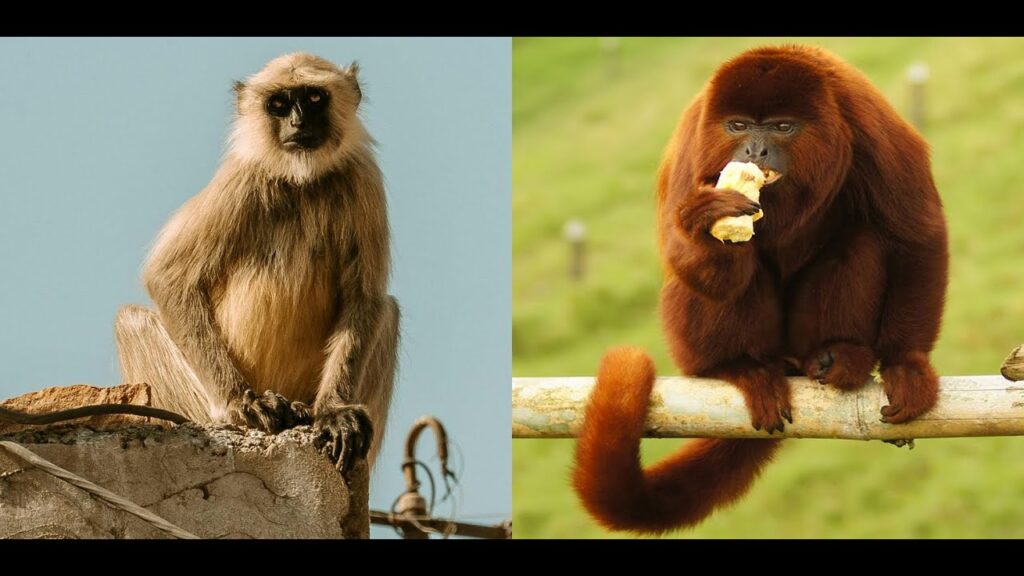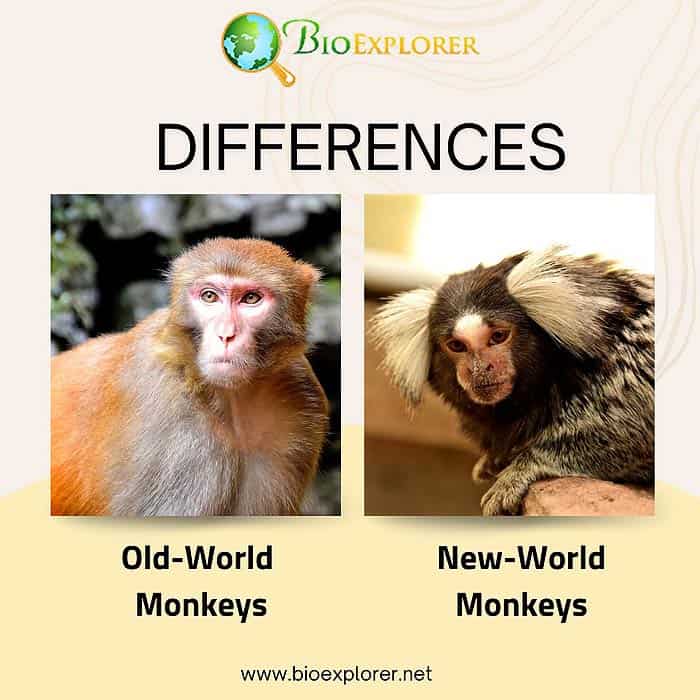
The main differences between New World monkeys (Platyrrhines) and Old World monkeys (Cercopithecoidea) are based on evolutionary lineage, geographic distribution, anatomy, and behavior. Here’s a breakdown of the key distinctions:
1. Geographic Distribution
- New World monkeys: Found in Central and South America.
- Old World monkeys: Found in Africa and Asia.
2. Nasal Structure
- New World monkeys: Have flat noses with side-facing nostrils (hence the term Platyrrhine, meaning “flat-nosed”).
- Old World monkeys: Have narrow noses with downward-facing nostrils (Catarrhine, meaning “downward-nosed”).
3. Tail
- New World monkeys: Often have prehensile tails (can grasp and hold objects), especially in species like howler and spider monkeys.
- Old World monkeys: Non-prehensile tails (if present at all); used mostly for balance, not grasping.
4. Size and Build
- New World monkeys: Generally smaller and lighter.
- Old World monkeys: Typically larger and more robust.
5. Locomotion and Habitat
- New World monkeys: Primarily arboreal (tree-dwelling).
- Old World monkeys: Often terrestrial (ground-dwelling), though many are also arboreal.
6. Thumb Structure
- New World monkeys: Less opposable thumbs; some species lack fully opposable thumbs.
- Old World monkeys: Well-developed opposable thumbs, aiding in precision grip.
7. Vision and Color Perception
- New World monkeys: Many have limited color vision; some females have trichromatic vision, but males often do not.
- Old World monkeys: Generally have trichromatic color vision, similar to humans.
8. Social Structure
- New World monkeys: Social structures vary, but tend to form smaller family groups.
- Old World monkeys: Often live in larger, more complex social groups with clear hierarchies.
9. Dental Formula
- New World monkeys: Typically 2.1.3.3 (incisors.canines.premolars.molars).
- Old World monkeys: Typically 2.1.2.3 (same as humans and apes).
These differences reflect millions of years of separate evolutionary development after their lineages diverged roughly 40 million years ago.




Certainly! Here are some visual comparisons between New World monkeys and Old World monkeys to help illustrate their differences:
🐵 New World Monkeys (Platyrrhines)
- Capuchin Monkey: Known for its intelligence and tool use. en.wikipedia.org
- Spider Monkey: Features a long, prehensile tail that acts almost like a fifth limb.
- Tamarins: Small monkeys with distinctive facial hair and vibrant colors.
🐒 Old World Monkeys (Catarrhines)
- Baboon: Large, terrestrial monkeys known for their social structures.youtube.com+7bioexplorer.net+7bioexplorer.net+7
- Macaque: Highly adaptable monkeys found in various habitats.
- Langur: Leaf-eating monkeys with specialized stomachs for digestion.
These images and descriptions should help you visually distinguish between New World and Old World monkeys. If you need more detailed information or additional images, feel free to ask!